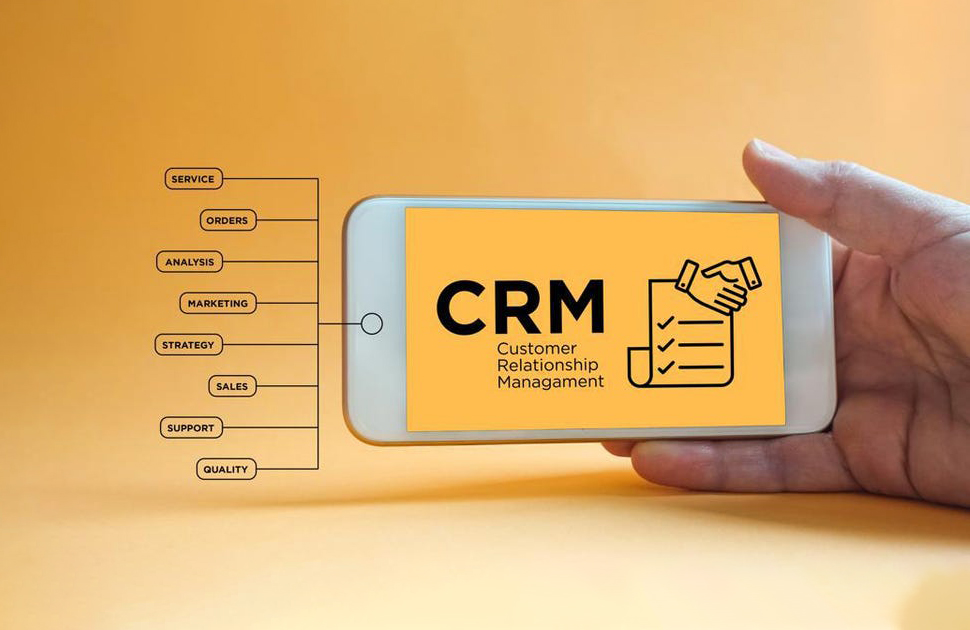Customer data remains one of the most valuable resources a business can have. By better understanding current and potential customers, an organization can offer more personalized attention and develop better marketing strategies.
However, recording, aggregating, and managing all this data is a daunting task. That’s why companies turn to integrated customer relationship management (CRM) systems to centralize systems, databases, and information flows.
What Is CRM Integration?
To better understand CRM integration; let’s take a look at how companies use these systems.
1) Customer Relations
Customer relationship management combines strategies and technologies to better manage interactions with users. It is based on the collection and analysis of data from the points of contact with customers throughout the customer journey. This can include everything from initial contact with prospects to post-sale interactions and customer retention efforts.
2) Centralization of Information
CRM software, in turn, is a centralized platform designed to consolidate customer information into a single database or a set of databases for faster and more streamlined access and analysis. Through this collection and storage of information such as personal customer data, account information, sales data, and company records, among others, customers can be more easily managed. Some CRM systems are software products installed on a company server, giving the company complete control over the program and data.
3) Automation of Data Collection
CRM systems allow customer data to be automatically collected, stored, and organized. Automation not only streamlines the customer experience (CX), but also improves the business by reducing workload. This also facilitates adaptability or connectivity with other systems within the company, which is perhaps the biggest advantage of CRM systems.
How Does the CRM Integration Work?
A CRM system reaches its full potential when it is connected with other applications and software. “CRM integration” is about connecting a CRM system with other systems, integrating a company’s customer data with third-party systems.
Integration will be different for different types of businesses. For some, it’s as simple as linking a CRM system with some features of a company’s website, which can be done through integrations already built into CRM software. However, more complex organizations will need to integrate a CRM platform with a variety of other systems, including ones that are just as or more complex, such as an ERP (Enterprise Resource Planning) system.
Most CRM system integrations require connecting through APIs (Application Programming Interfaces). The “Integration Platform as a Service” (iPaaS) is a tool that facilitates the exchange of information between third-party systems and has become common for CRM integrations.
CRM Integration Examples
While CRM integration can extend to a wide variety of business functions, here are some particularly common examples of CRM integration.
- Integration of CRM with electronic commerce.
- Integration of CRM with marketing.
- CRM integration with customer service.
What Are the Benefits of CRM Integration?
1) Better Communication and Customer Service
The quality of the CX when doing business with a company is just as important as the quality of the products or services provided. This is particularly true in business fields where many competitors offer similar products and services. To keep customers satisfied and stay ahead of the competition, organizations cannot afford to miss any necessary communication, and must establish timely, accurate, and personalized contact when communicating.
The access to information, the ability to automate, and the potential to supplement employee awareness that CRM integration enables have become invaluable to the customer-facing elements of many companies. CRM can help drive sales growth by attracting and retaining customers with the right communication.
2) Opportunities for Automation
Any platform that supports the automation of communication and record-keeping tasks can help a business conserve resources, as these are two areas that will otherwise consume a significant amount of employee time. For example, a well-integrated CRM system can connect incoming information about customer service needs to a system that automates proper communication with the user and relevant parties within the business. This saves time and money because there’s no need to hire an employee to direct the workflow or keep manual records of everything once it’s complete.
3) Improved Organization and Efficiency
As important to internal efficiency as automation is, consolidating information into a single system enables greater productivity. Tasks like monitoring and analyzing customer data can be done more easily and at scale when employees don’t have to log in and operate across multiple systems, and when desired information can be instantly retrieved and managed. Centralized access to organized data not only eases an employee’s workload; it also promotes transparency and clear communication within the business.
 Subscribe
Subscribe
 Ask for a demo
Ask for a demo

 4 min
4 min
